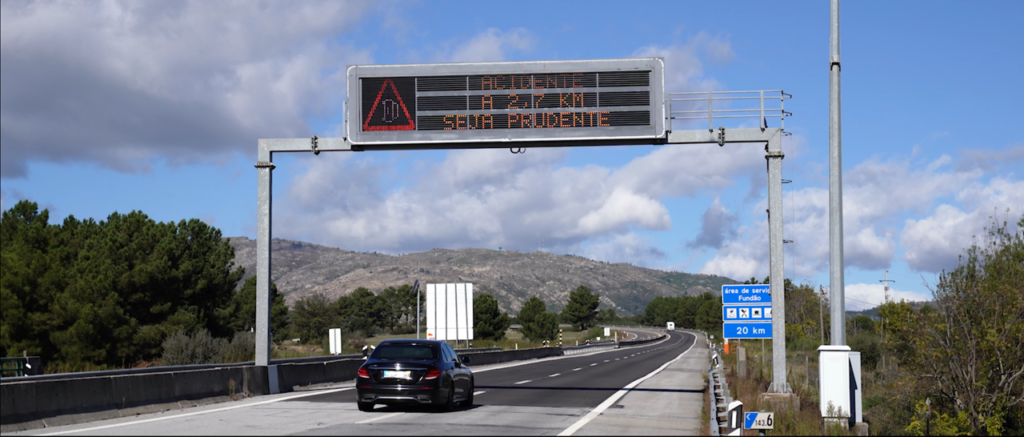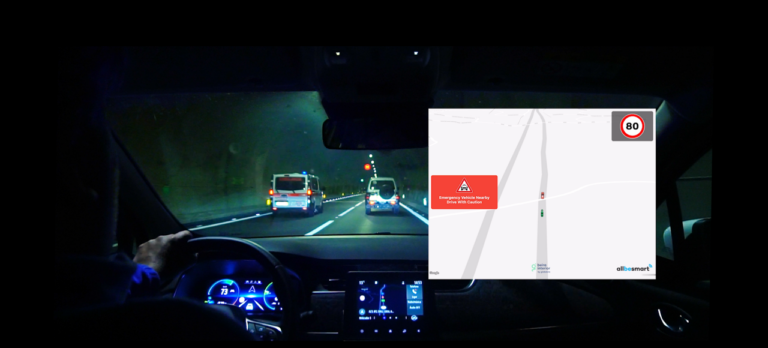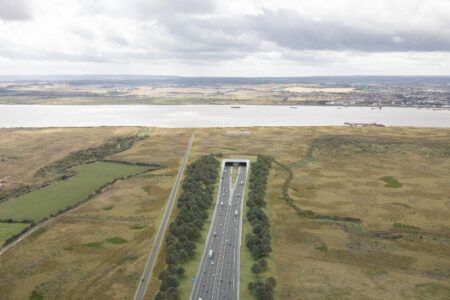A tunnel incident warning system trial in Portugal has concluded successfully with results suggesting the ETSI ITS G5 short-range communication technology has reached a level of maturity sufficient to warrant widespread rollout.
The overall aim of the project is to reduce the number of road deaths in Portugal, which are currently above the European average. Authorities in the country are committed to the EU’s vision of zero road fatalities by 2050.
It is widely accepted that accidents in road tunnels are more dangerous than in the open air whilst hazardous substances are considerably more difficult to remove. When accidents occur in tunnels, smoke can cause poor visibility and the resulting decrease in oxygen can occur rapidly.
The trial, which was supported by Cohda Wireless’s V2X technology, was part of the C-Roads Portugal (PT) initiative, comprising five C-ITS testbed Macro Pilot cases in the Atlantic Corridor in Portugal, as well as testbed of pilot cases, and aims to expedite the deployment of national scale C-ITS services.

Cohda Wireless supported C-ITS technology developer and systems integrator Allbesmart in a pilot project in the 1,620m-long Gardunha tunnel on Portugal’s A23 highway between cities of Castelo Branco and Fundão, testing the performance of V2X communication to deliver a tunnel incident warning service under real conditions.
Other project partners included the leading road operator Globalvia, transport infrastructure operator leader, is the third partner of the project which manages the Gardunha tunnel and operates the A23 Beira Interior highway.
The implementation applied a Decentralized Environmental Notification Messages (DENM) service to alert vehicles to dangers, hazards and delays associated with tunnel access. The Gardunha tunnel is fitted with 20 surveillance cameras, air quality sensors, and fire and carbon monoxide sensors, all connected to a Traffic Control Center in the village of Lardosa.
Cohda’s V2X technology, comprising six road-side units (RSUs) and ten on-board units (OBUs), facilitated the data exchange between infrastructure and vehicles based on the ITS G5 (IEEE 802.11p) protocol of the European Telecommunications Standards Institute (ETSI) on the 5.9GHz frequency.
Allbesmart CEO Jorge Ribeiro said that the trial proved conclusively that communication between RSUs and the OBUs was successfully delivered and that the pilot’s promising results could significantly reduce the risks associated with large tunnel infrastructure on Portuguese roads and highways.
“The trial proved our ability to deliver accurate and timely warning messages to drivers approaching the tunnel, even allowing them to exit the road at the next junction, if required,” Ribeiro explained.
Cohda CEO Dr Paul Gray said that Cohda will remain involved in the next phase of the trial through the provision of its proprietary V2X-Locate technology. “When GNSS connectivity is limited, such as in underground car-parks or tunnels, accurate vehicle positioning is almost impossible, as demonstrated in the Gardunha tunnel where location errors of up to three meters were demonstrated,” explained Dr Gray. “Only V2X-Locate can achieve sub-meter precision and we will support Allbesmart to deliver this.”
In early 2019, Cohda successful trialed V2X Locate in the 2.2km Bjørnegård tunnel in the municipality of Bærum, Norway.
Daniel Pinto da Silva, general manager of the Globalvia Beira Interior Concession, reiterates Globalvia’s commitment in achieving absolute road safety and reaffirms high interest in proceeding with the development of applications based on Cohda’s technology.
Next steps for Allbesmart include transitioning the pilot from C-ITS to a 3GPP V2X communication standard by deploying a pilot with 3GPP 5G V2X vehicular connectivity using the evaluation kit MK6 from Cohda Wireless (C-ROADS is based on ITS-G5 MK5). An interface for V2V sidelink communications will also be tested. The next steps will be done in the context of the P2020 5G-AUTO project.





